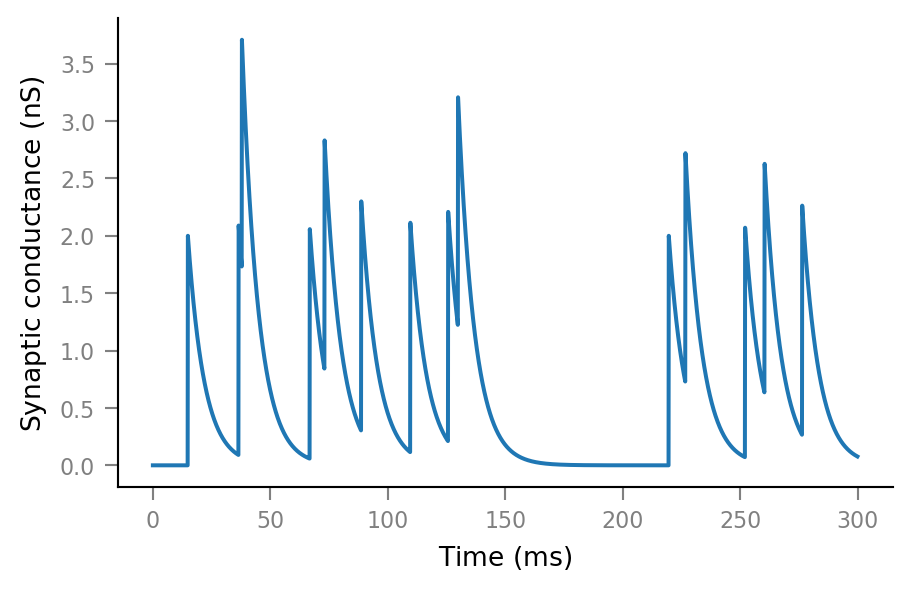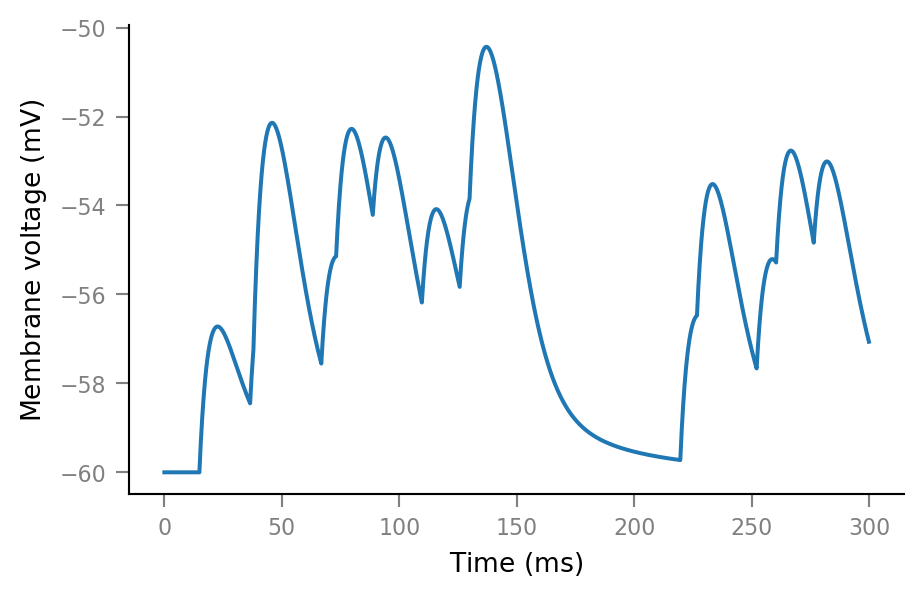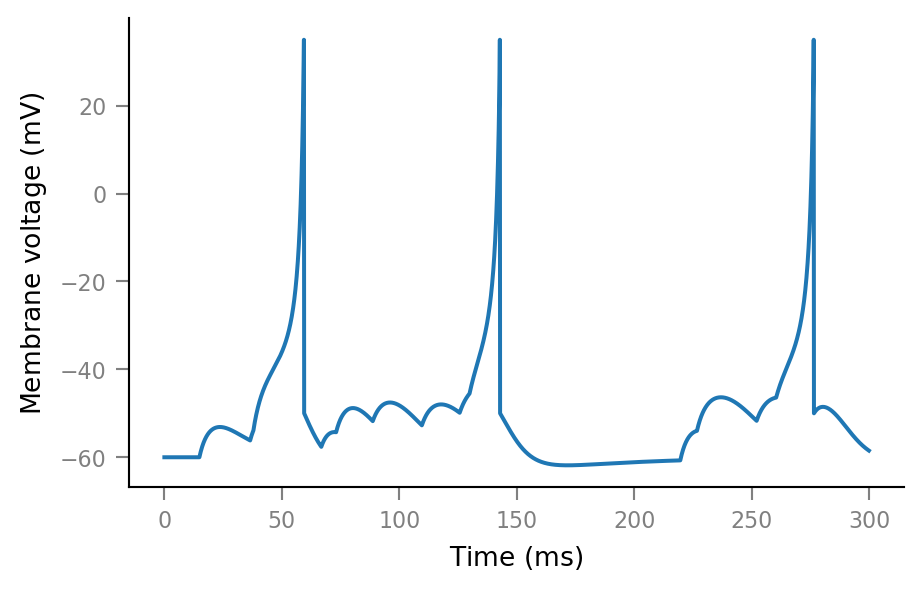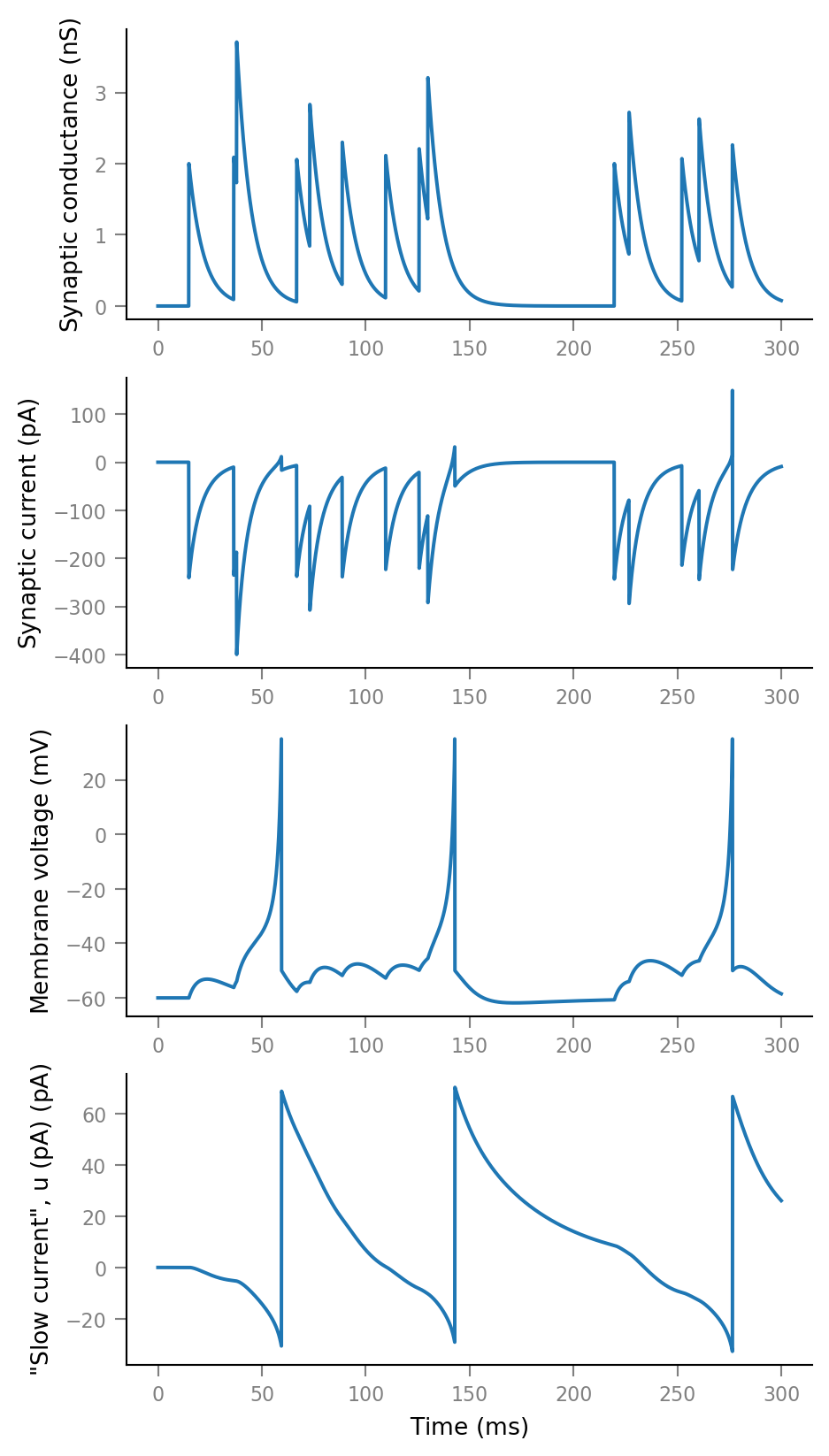2020-07-27 • Synaptic conductances
Contents
2020-07-27 • Synaptic conductances¶
This notebook builds on /notebooks/2020-07-06__Single_neuron_sim.
There, we used an ad-hoc solution to stimulate the neuron
(namely, directly give I as input, where I is a spike train convolved with a manually defined EPSC).
Here, we use proper synaptic conductances.
Spike train¶
%run init.ipynb
Importing np, mpl, plt … ✔
Importing unyt … ✔
Importing code package (voltage_to_wiring_sim), as `v` … ✔
Imported * from v.util and from v.units
fix_rng_seed(55)
tg = v.TimeGrid(T=300*ms, dt=0.1*ms)
spikes = v.generate_Poisson_spike_train(tg, f_spike=30*Hz)
v.spike_train.plot(tg.t, spikes);

Synaptic conductance¶
See here for the source code that calculates the synaptic conductance.
In brief:
g_syndecays exponentially, with time constantτ_syn.At every spike,
g_synis increased byΔg_syn.
This is e.g. how it is done in this Brian implementation of a Hodgkin-Huxley network.
Δg_syn = 2 * nS
τ_syn = 7 * ms
g_syn = v.calc_synaptic_conductance(tg, spikes, Δg_syn, τ_syn)
plt.plot(tg.t, g_syn);

Neuron simulation¶
RS = v.params.cortical_RS
print(RS)
IzhikevichParams
----------------
C = 100 pF
k = 0.7 nS/mV
v_r = -60 mV
v_t = -40 mV
v_peak = 35 mV
a = 0.03 1/ms
b = -2 nS
c = -50 mV
d = 100 pA
v_syn = 0 mV
f = partial(v.simulate_izh_neuron, tg, RS)
sim = f(g_syn)
plt.plot(tg.t, sim.V_m);

With twice as much synaptic conductance, we get spikes:
sim = f(2 * g_syn)
plt.plot(tg.t, sim.V_m);

fig, axes = plt.subplots(nrows=4, **v.figsize(aspect=2))
signals = g_syn, sim.I_syn, sim.V_m, sim.u
for i, (ax, sig) in enumerate(zip(axes, signals)):
ax.plot(tg.t, sig)
if i < 3:
ax.set_xlabel(None)

Note that membrane currents, such as the synaptic current, are defined by convention as positive outward (ch 5 of Dayan-Abott). Here synaptic current flows into the neuron, hence the negative sign.
Note also the brief periods where the synaptic current is positive, whenever the membrane potential is higher than the synaptic reversal potential v_syn.